Astronomy Open Night 2024 a shining success
Around 3,000 people were welcomed to Macquarie University's Wallumattagal campus on 21 Sep 2024 for our annual Astronomy Open Night.
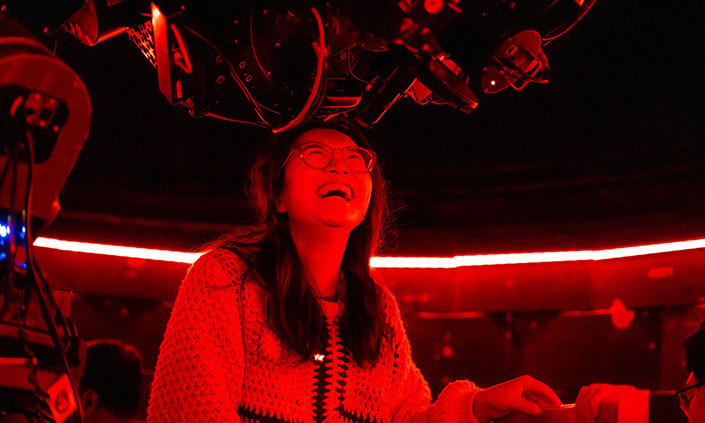
Balaclava Rd, North Ryde, Macquarie University
NSW 2109 Australia
Macquarie hosted its biggest-ever Astronomy Open Night on Saturday 21 September, with more than 3000 ticket holders turning up to Wallumattagal Campus to enjoy five hours of science-y entertainment, thanks to hard-working staff supported by about 200 volunteers.
Kelly Sharpless, Outreach and Engagement Lead for the Faculty of Science and Engineering, says the night’s success was due to many months of hard work by the outreach team and supporters across the University, as well as decades of experience.
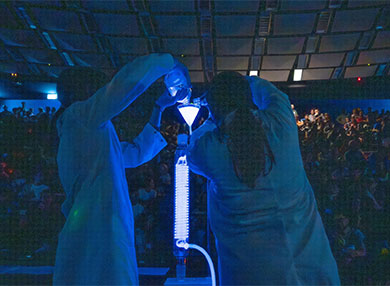
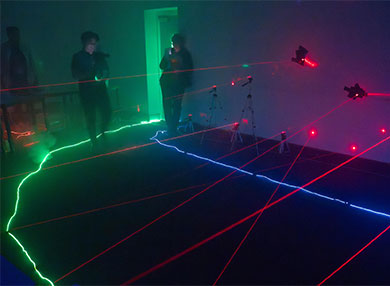
Macquarie has run an Astronomy Open Night at least once a year (and sometimes more often) since the 1980s. The event has expanded beyond its original astronomy focus to encompass a broader range of science and engineering disciplines.
“Astronomy Open Night has turned into a science and engineering extravaganza,” Kelly says.
“But while astronomy is at the centre, we also had robotics and a laser maze, and this year our famous physics magic shows were joined by chemistry magic shows and so many other hands-on science activities and demonstrations for people of all ages,” Kelly says.
Hugely popular, particularly among younger visitors, was the laser maze challenge, coordinated by the School of Mathematical and Physical Sciences (MAPS) and the student chapter of the international physics society Optica.
School-age visitors were also big fans of the robotics display managed by the FIRST robotics team, with some enthusiastic visitors trying their hand at using controls to move robots around.
Students from the School of Computing hosted the Cosmic Arcade, where visitors could try out student-made games, including five winning entries from this year’s Game Jam.
New additions to the event included creative elements that broadened its scope.
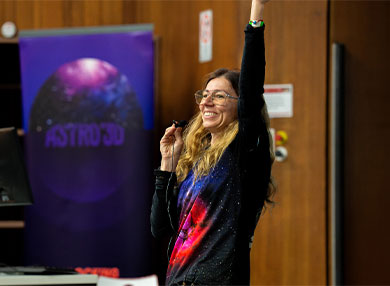 The Immersive Power of Light, an astronomy-inspired exhibition held in collaboration with Macquarie University Art Gallery, drew more than 150 visitors and explored how the psychology and symbolism of light create a nexus between art and science.
The Immersive Power of Light, an astronomy-inspired exhibition held in collaboration with Macquarie University Art Gallery, drew more than 150 visitors and explored how the psychology and symbolism of light create a nexus between art and science.
The astrophotography exhibition invited entries in three categories: ‘Planetary’ (images of planet-like objects in the solar system such as the moon, the sun, comets or other objects); ‘Widefield’ (photo or video, such as landscapes, constellations, aurora australis, Milky Way); and ‘Deep Sky’ (including nebulae, galaxies and star clusters).
“We announced winners in every category, and we also had a people’s choice award, different from the overall winner,” says Kelly.
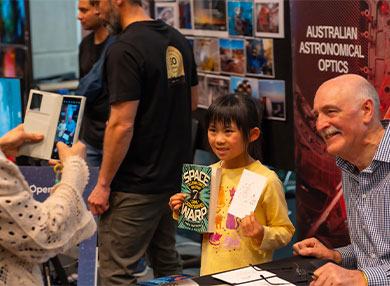
A series of astronomy short talks ranged from exoplanets to the use of AI in astronomy and the ethics of space exploration.
Distinguished Professor Jon Lawrence delivered the keynote lecture, taking the audience through the next generation of ‘extremely large telescopes’ and the role of Australian Astronomical Optics (AAO) at Macquarie University in their development.
“It’s an absolute highlight of our year and the faculty’s biggest single event,” says Kelly.
“The scope, expertise and variety of activities on show make this the best astronomy show in Australia and possibly the country’s best science event.”